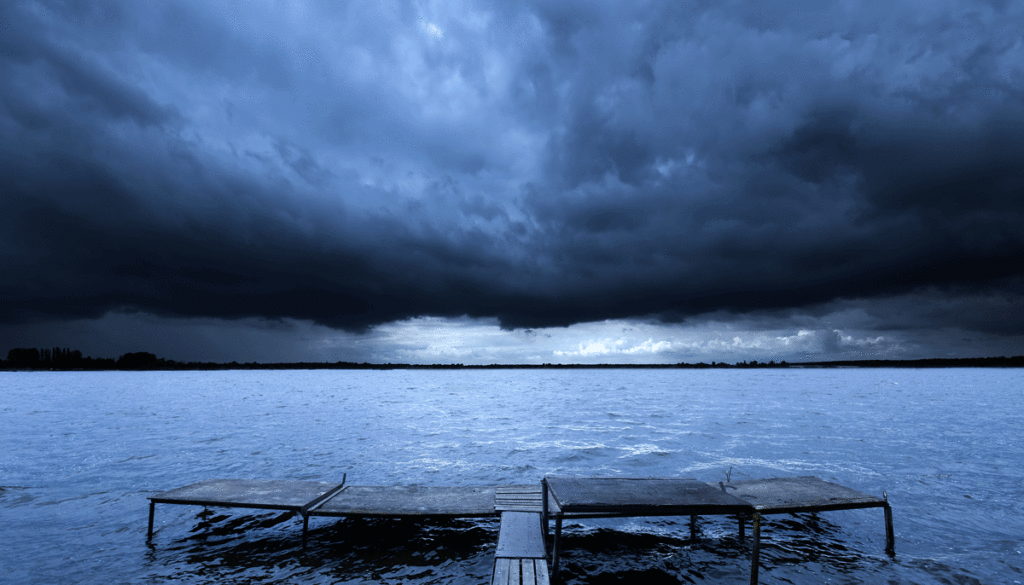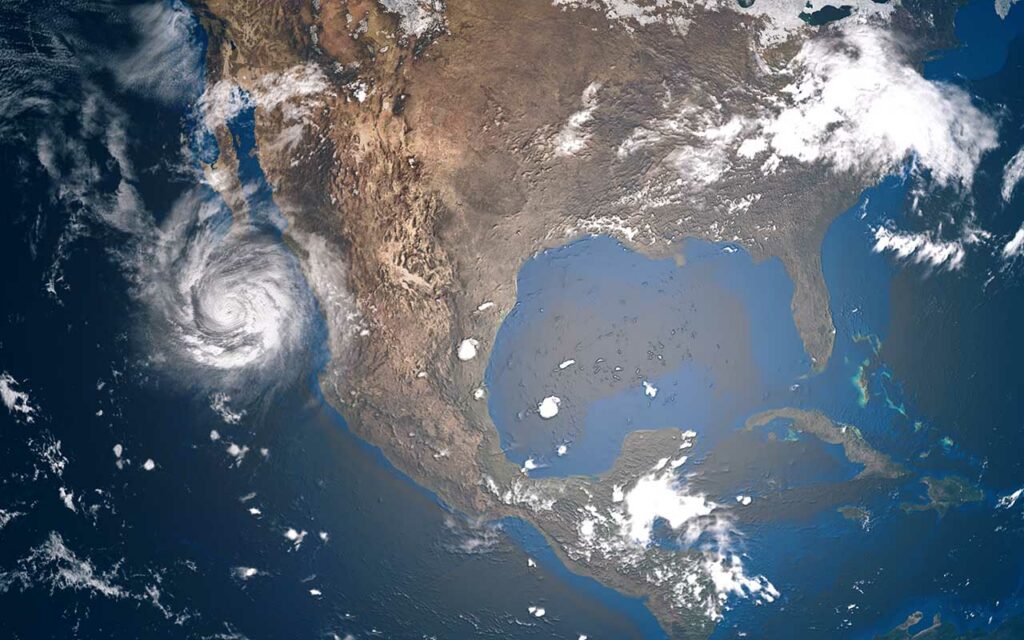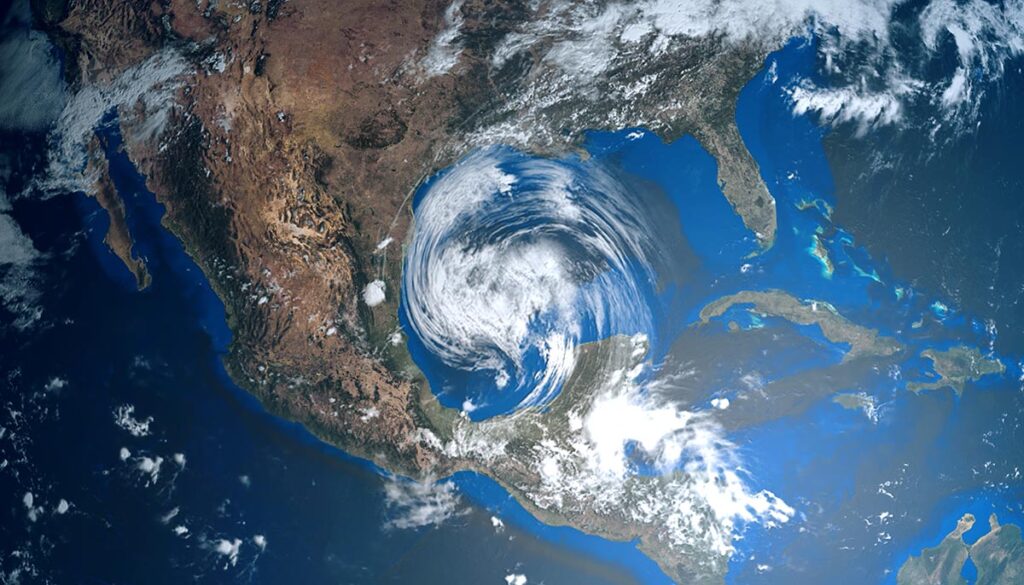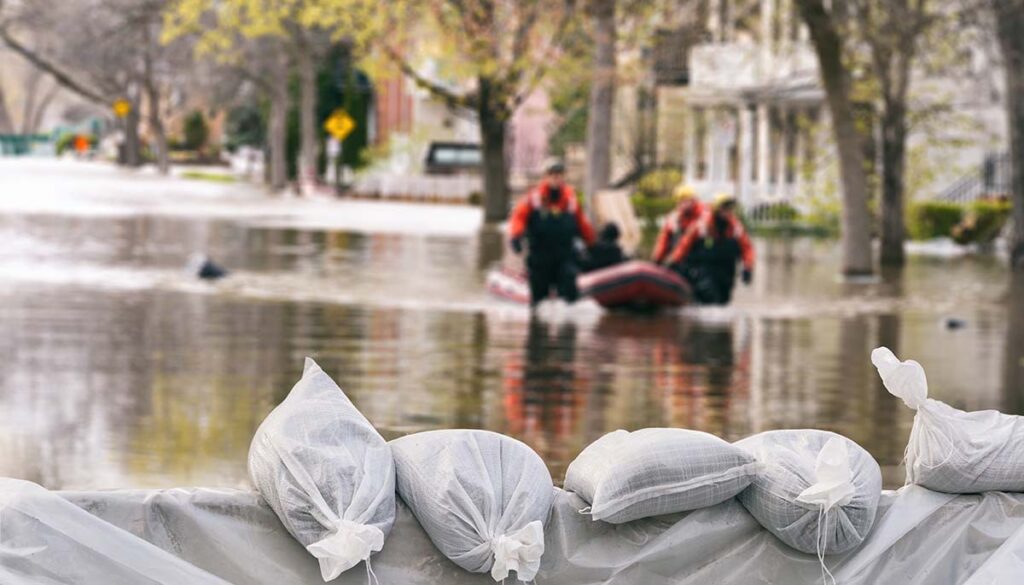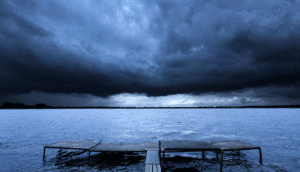There are five systems churning in the Atlantic–and one could head for the Gulf next week. Meanwhile, severe weather and flooding threats are ramping up in the Lower 48, making it a time for everyone to review storm safety tips.
Storm activity is ramping up in the Atlantic and in the US
On Wednesday, the Storm Prediction Center (SPC) issued two separate Level 2 severe weather risk warnings on both sides of the country. In the West, the warning covered portions of Idaho, Nevada and Utah. In the East, the warning was over portions of Indiana, Ohio, Michigan, Pennsylvania, and New York.
The National Weather Service (NWS) is warning of heavy rain in the West that could bring potential flash flooding over parts of Montana, Idaho, Wyoming, Utah, Colorado, Nevada, Arizona, and New Mexico. Widespread flood alerts were also issued in Utah, Arizona, Colorado, and New Mexico.
5 systems active in the Atlantic, one could reach the Gulf
The National Hurricane Center (NHC) is tracking five separate disturbances in the Atlantic, Including hurricane Fiona and Tropical Storm Gaston. “Disturbance 1” has a 90% chance of development in the next five days, while “Disturbance 2” has a 50% chance of development in five days, and “Disturbance 3” has a 30% chance of cyclone formation in five days.
Accuweather forecasters are watching one system they say could impact US cities from Miami to New Orleans.
Storm safety tips – Part 1: Protect the 4 Ps
You know your ABCs, but what about the 4 Ps? The 4 Ps stand for: People, property, pets, and plants.
People: As we approach the first official day of fall, temperatures are dropping and storms could leave you facing the elements. Dress in layers (at least three in cold weather) and wear a hat that covers your ears when outdoors. Pay special attention to children and the elderly, CBS Miami reports. Make sure to have enough clothing and blankets for warmth, as well as enough heating fuel.
Property: Clear tree limbs and branches that could scrape against your home or roof and cause damage during a storm. Use caution with indoor space heaters, and keep an eye on children and pets.
Pets: Pets struggle just as much as people in cold weather outdoors. Dogs should not be taken outdoors any time the temperature reaches 10°F or lower.
Plants: Outdoor plants may need to be covered with plastic. Potted plants should be brought indoors. Water early in the day to avoid nighttime freezes.
Storm safety tips – Part 2: Understanding severe weather
The National Weather Service (NWS) has specific criteria it uses in determining severe weather. Specifically, it considers a severe thunderstorm to be any system that does one or more of the following:
· Has winds in excess of 58 mph (50 knots) or greater
· Has damaging winds
· Produces a tornado
· Produces hail 1 inch in diameter or larger
By default, a hurricane would meet the criteria for severe weather. The lowest category of hurricane, Category 1, exhibits damaging winds between 74-95 mph. The higher categories (2 to 5) have even higher wind speeds.
Storm safety tips – Part 3: Know where to shelter
Do you know where you and your loved ones can find shelter during a storm? If you don’t already have a plan, read this now!
A. If you live in a home with a basement, go to an area belowground without windows. Make sure you are in a sturdy structure that won’t collapse.
B. If you don’t have a basement, find a centrally located room without windows, such as hunkering down in the bathtub. However, this still may not be enough protection in a severe storm. If you do not have a bathtub, shelter under a sturdy table or desk.
C. If you live in a mobile home or other dwelling that may not withstand a strong storm, identify a local shelter well in advance that you can go to before conditions become unsafe to travel.
D. Storm shelter locators: The Red Cross and Argis web app.
Storm safety tips – Part 4: Additional resources
You can find more tips and information from the National Weather Service at ready.gov/severe-weather and weather.gov/safety/thunderstorm-prepare. Your best chance for your home, property, and family to make it through bad weather in one piece is to prepare early.

